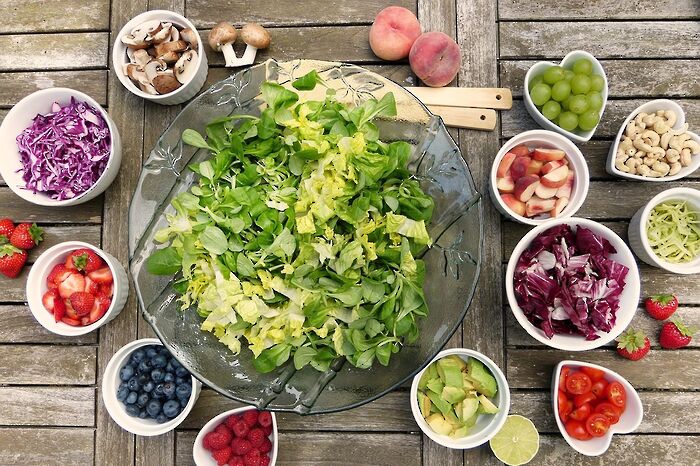It’s time to wine down
Edward Pinnegar kicks off his student wine column by asking the ultimate question: red or white?

Wine can seem very complicated: it’s tied up with strange jargon and people with scrunched-up noses who swill it about in glasses the size of Wales. At Cambridge it’s often encountered at formals, drunk after (occasionally during – if you’re doing it right) unintelligible Latin graces under portraits of obscure men whose glassy, all-seeing eyes seem pretty judgemental about you and your plonk.
So, actually buying a bottle of wine can be oddly foreboding. But there is, at least, one easy categorisation to live by: do I want a red or a white?
Not only is this a really useful distinction; it’s also a great starting point for getting your head around what you really like about wine. Best of all, it isn’t even cover for anything complicated – because whilst the differences between individual reds and whites can be pretty stark, there’s a simple reason that reds and whites tend to be different beasts.
Basically, reds are fermented with their skins on and whites aren’t. Red wines are – unsurprisingly – always made from red grapes (although a very few have a little bit of wine from white grapes for extra kick), and white wines are nearly always made from white grapes.
After harvesting the grapes, they’re crushed and destemmed – leaving an unappetising-sounding mixture of seeds, skins, pulp and juice. After fermenting, more often than not in stainless steel, but traditionally in vats, sometimes trodden by foot, the wine is run off and the pulp pressed again to extract the remaining juice.
Press too softly and all the tasty, healthy compounds (called polyphenols) – which tend to be in the skin and the seeds of the grapes rather than in the fleshy pulp – will be wasted. Press too hard, and the wine becomes bitter.
So why don’t white wines ‘age’ like reds?
My grandad used to think that all wine improved with age. ‘An older vintage,’ one of us would say (with much trepidation) as a 1974 Sainsbury’s red emerged from the cupboard, with forty years of dust to match. My grandad was wrong, and we drank a lot of salad dressing.
The idea of aging a wine, at least, is that it’s meant to improve after a bit of time sitting around. Some do, some don’t – but again, it all comes down to the skins, and a bit of straight-forward chemistry. It’s the presence of polyphenols – the colour pigments, flavour compounds and tannins (the stuff in red wine that makes your mouth feel a bit dry) – that influence the rate at which the wine reacts with oxygen.
As a rule of thumb, deeper reds – ones that have a darker colour and a richer flavour – tend to age better because they have the necessary chemical structure and tannin levels to improve. Lighter reds, which have lower levels of phenols and so are more chemically unstable, don’t stand up so well to years stashed away: too much oxygen and you might just end up with a sad old vinegary salad dressing.
Cruelly snatched from their skins at birth, whites are usually similar. Some types of white grape are exceptions: more chemically complex Chardonnays, Viogniers and Rieslings can keep and improve… if you have the self-discipline not to hoover them up in the meantime.

What to drink this week:
It’s week 2 and it’s cold, so this week’s suggestions are two very different styles of red, and a white. All are available from a Cambridge branch of Sainsbury’s, Aldi or the Cambridge Wine Merchants.
Vicente Faria Animus Tinto 2017, Douro (Portugal). Aldi, £5.49. Vegan.
As a rule of thumb Sainsbury’s wine isn’t always great value, and this easily beats anything you’ll get there at that price level. Rich and lush: the sort of red that’ll warm you from the inside. Best with anything a bit heavy – think cheesy or meaty – or, for a vegan option, anything with Quorn, mushrooms or beans.
If it were human it’d be: renowned for giving good hugs
Chateau Curton La Perriere 2014, Bordeaux (France). Cambridge Wine Merchants, £7.08 (with 10% student discount).
A great introduction to Bordeaux, one of the world’s most famous wine regions, located in western France. A medium-bodied (ie. slightly ‘lighter’, less rich) style than the above. It even won a gold medal in 2016, so hey it must be good (these do genuinely count for something).
If it were human it’d be: your friend’s dad who’s sixty-something but still actually rather cool
Sainsbury’s House Sauvignon Blanc, Western Cape (South Africa). Sainsbury’s, £4.80. Vegan.
Don’t be put off by the bland label! You’ll be pleasantly surprised by this crisp white. Leave it out of the fridge for 20 minutes prior to drinking. Typically described as ‘fruity’ – you might get a hint of grapefruit or lemon. Have with something lighter like fish, or anything with (cooked) peppers, onions or avocado.
If it were human it’d be: unequivocally spicy af
 Comment / Cambridge’s tourism risks commodifying students18 April 2025
Comment / Cambridge’s tourism risks commodifying students18 April 2025 News / Cambridge student numbers fall amid nationwide decline14 April 2025
News / Cambridge student numbers fall amid nationwide decline14 April 2025 News / Greenwich House occupiers miss deadline to respond to University legal action15 April 2025
News / Greenwich House occupiers miss deadline to respond to University legal action15 April 2025 Comment / The Cambridge workload prioritises quantity over quality 16 April 2025
Comment / The Cambridge workload prioritises quantity over quality 16 April 2025 Sport / Cambridge celebrate clean sweep at Boat Race 202514 April 2025
Sport / Cambridge celebrate clean sweep at Boat Race 202514 April 2025





